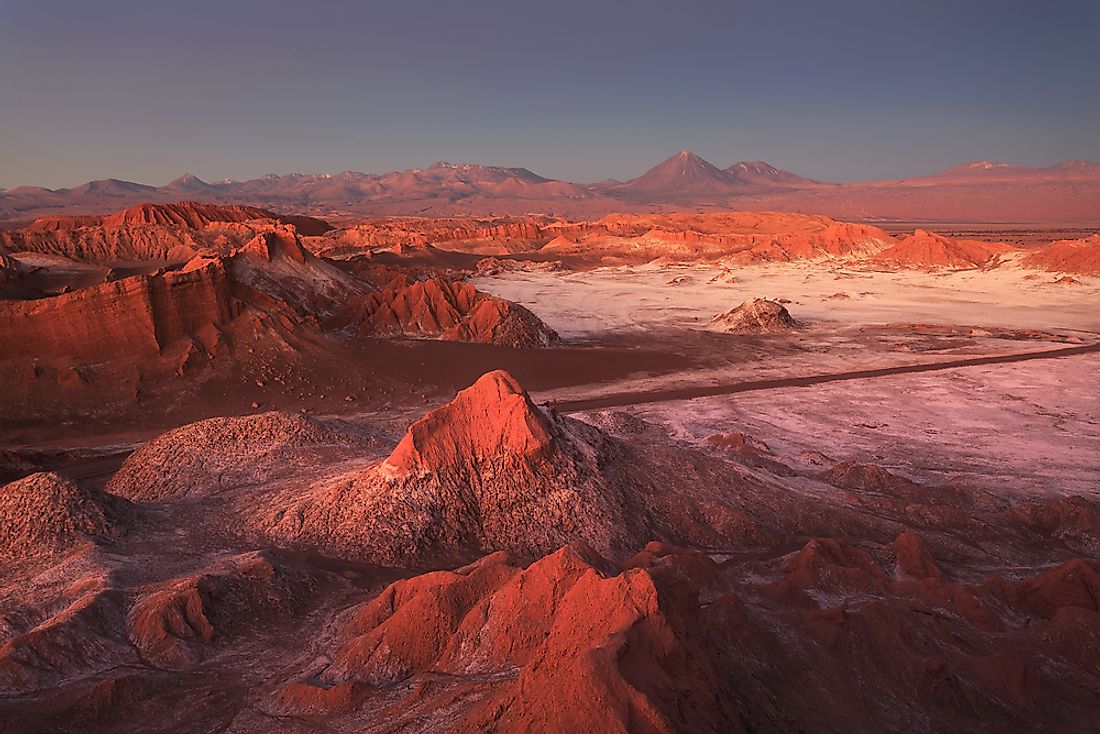What Type Of Climate Does Chile Have?

Chile occupies a long narrow stretch along the west coast of South America. It extends from the southern border of Peru in the north to the southernmost tip of contagious South America. Chile has seven major climatic subtypes ranging from the Mediterranean, desert, alpine tundra, glaciers, humid subtropical, and oceanic. The country has four seasons: winter from June to August, spring from September to November, summer from December to February and autumn from March to May. The main factors that influence the climate of Chile are the Humboldt current, Andes Mountains, the coast ranges, southern circumpolar, and the Pacific anticyclone.
Norte Grande
Chile’s “Great North” experiences a warm climate making it a suitable definition for travelers and tourists. The coastal cities of Antofagasta, Iquique, and Arica see temperatures between 68˚ – 77˚F. The desert regions of the north experience more extreme temperatures of between 86˚ – 122˚ F during the day and -15˚C - 5˚ F at night. The Highlands experience cold temperature because of the altitude. Heavy rainfall comes in February and March.
Atacama and Elqui Region
The Atacama and Elqui regions see bright sunny skies and scorching temperatures. These conditions make it a suitable point for astronomical observation. The coastal cities of Caldera and la Serena are among the few people that experience the Mediterranean climate. Rain is scarce, and farmers use the coastal fog to irrigate crops. The Atacama Desert lies on the northern end of the region. It is the driest desert in the world with temperatures of above 95° Fahrenheit at midday. The average rainfall in just 1 mm annually. Some weather stations in the desert have not reported any moisture for about ten years. The desert is so dry and hot that mountains as high as 22,590 feet are free of glaciers. Some parts of the desert are occasionally covered by marine fog locally known as “Camanchaca” that provide the much-needed moisture for algae, cacti, and lichens.
Central Valley Region
The climate in the Central Valley region of Chile is Mediterranean with warm days and cool nights. The weather provides ideal conditions for farming especially during the rainy season. Between September and April, the coastal city of Viña del Mar and Valparaíso experience sunny days and cool nights that attract thousands of tourists.
Santiago Metropolitan Region
The capital city Santiago and its environs experience temperatures of about 86 degrees Fahrenheit during the summer but drop to 59 degrees Fahrenheit at night. During winter, the temperature drops to below zero in the neighboring Andes, creating a serene destination for skiers.
The Lake District, Bío Bío, and Araucanía
This region experiences temperatures of about 62 degrees Fahrenheit with frequent rainfall that increase between May and August. The cities of Valdivia, Osorno, and Temuco experience rainfall throughout the summer. The island of Chiloe experiences high humidity and heavy rains of up to 4,000 millimeters resulting in vast jungles and lush forests. During the winter, the southern areas of the region experience continuous rainfall for hours, days, and even weeks. Between December and February, the rains subside and the skies clear to expose the snow-capped volcanoes, calm lakes, and lush vegetation.
Magallanes and Aysén Regions
The southernmost part of Chile is also the southernmost part of the continent. The region experiences extreme rainfall, wind, and low temperatures. During the winter, the cities of Puerto Williams and Punta Arenas experience thick snow. During summer, the temperature in some places such as Torres Del Paine rises to about 77° Fahrenheit.
Juan Fernández Archipelago And Easter Island
Easter Island experiences a subtropical climate with intense heat and humidity during the summer especially between January and February when temperatures rise to 82° Fahrenheit. However, sporadic rainfall is typical in the tropics. The best months to visit the islands are July and August when rainfall is minimal, and the temperatures are comfortable. The Juan Fernandez archipelago in the Pacific experiences a Mediterranean climate that attracts diving enthusiasts. The Humboldt Currents are chilled by wind blowing from Antarctica resulting in cool water perfect for diving.











